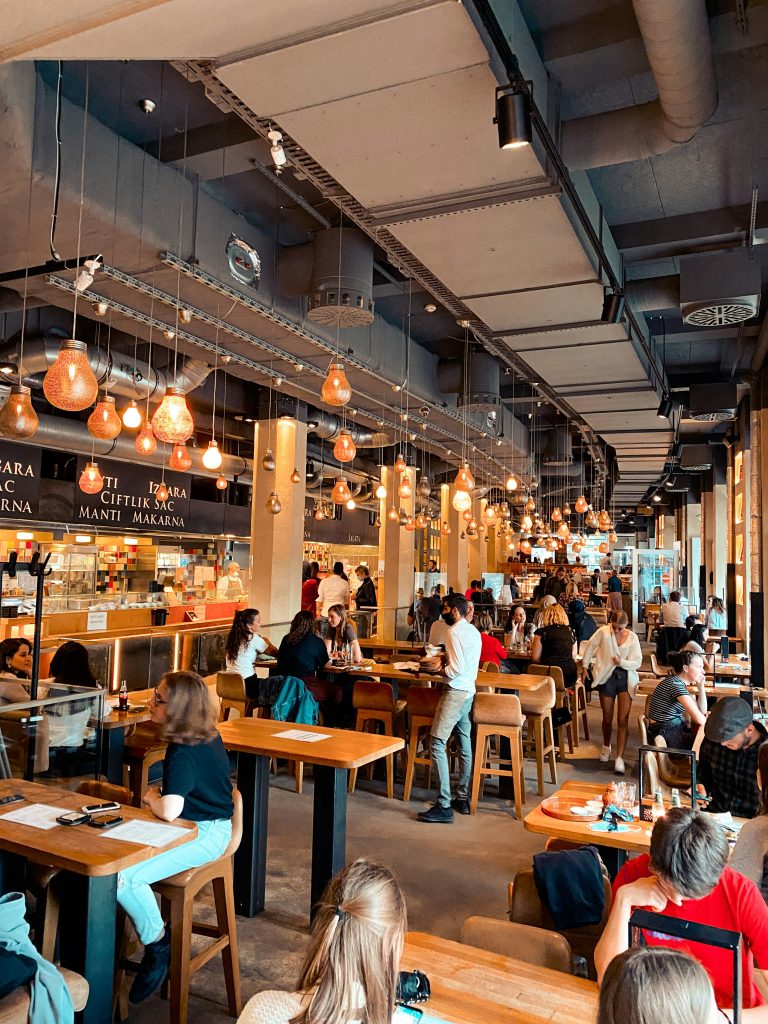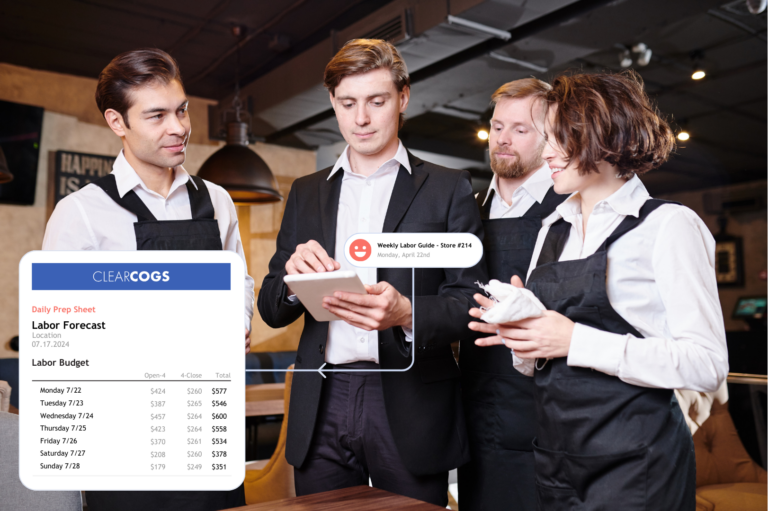December 30th, 2022
Overview
Food inventory management is a way to track and control the amount of inventory a restaurant has on hand at any given time. This includes keeping track of what has been purchased, how much has been used, and how much is left at the end of each day. Proper food inventory management can help a restaurant improve its purchasing practices, minimize inventory loss due to factors such as spoilage or theft, and maximize profitability.
It can also help to identify areas where the restaurant may be losing money, such as menu items with lower profit margins, and make changes to recover lost profits and prevent similar pitfalls in the future. A food inventory management system can also help to reduce food waste and improve overall efficiency, as well as provide insights into cost of goods sold (COGS) and other financial metrics. There are various tools and techniques available for food inventory management, including manual methods like pen and paper, spreadsheet software, and specialized inventory management software.
Inventory Management
Inventory management is an essential aspect of running a successful business, particularly in the food and beverage industry. Proper inventory management helps businesses keep track of their inventory levels, minimize waste, and increase productivity, all of which can lead to improved profitability.
According to a report by FoodPrint, up to 10% of food inventory purchased by restaurants is wasted, resulting in lost revenue. This highlights the importance of carefully managing inventory levels to ensure that businesses are not overstocking or understocking. By closely tracking inventory, businesses can make informed decisions about what to order, how much to order, and when to order it, helping to reduce waste and improve efficiency.
In addition to minimizing waste, effective inventory management can also help businesses prevent theft and employee mistakes. Proper inventory tracking allows businesses to easily identify discrepancies and address them before they become major issues.
Inventory management is also crucial for maintaining accurate financial records and forecasting future needs. By accurately tracking inventory levels and costs, businesses can accurately calculate their Cost of Goods Sold (COGS) and make informed decisions about pricing and profit margins.
One of the main challenges in inventory management is balancing the need to keep enough inventory on hand to meet customer demand with the need to minimize waste and excess costs. This is where technology can come in handy. By implementing an inventory management system, businesses can easily track and analyze inventory data in real-time, providing valuable insights into trends and patterns that can help inform decision-making.
According to a survey by Toast, a restaurant technology company, over 50% of restaurant operators reported that they use some form of inventory management software to track and manage their inventory. The survey also found that those who use inventory management software reported higher profit margins, lower food costs, and improved efficiency compared to those who do not use such software.
In conclusion, inventory management is a vital aspect of running a successful food and beverage business. Proper inventory management helps reduce waste, prevent theft and employee mistakes, and improve financial forecasting, all of which can lead to improved profitability. Implementing an inventory management system can provide valuable insights and improve efficiency, making it an essential tool for businesses in the food and beverage industry.
Why Inventory Management Matters
Effective inventory management is crucial for businesses in a variety of industries, as it can help to reduce costs, improve efficiency, and increase profits. According to the National Retail Federation, “Inaccurate inventory management can cost retailers as much as 10% of their annual revenue. By contrast, businesses that effectively manage their inventory can see an increase in profits of up to 43%.”
There are several key components of inventory management, including:
- Stock control: This involves accurately tracking the quantities of inventory on hand and identifying when it is time to restock.
- Warehousing: This involves the storage and organization of inventory, including the use of systems such as barcoding and RFID (radio-frequency identification) technology to track and locate items.
- Ordering: This involves forecasting future inventory needs and placing orders with suppliers in a timely manner to ensure that inventory levels are maintained.
- Receiving: This involves properly tracking and documenting the receipt of goods from suppliers, including verifying the accuracy of orders and ensuring that items are properly stored and accounted for.
- Distribution: This involves the movement of inventory from the warehouse to the appropriate locations within a business, including retail stores, distribution centers, and production facilities.
In addition to these core components, inventory management also involves the use of various tools and technologies to track and monitor inventory. These may include software systems, such as enterprise resource planning (ERP) systems and inventory management software, as well as physical tools such as barcode scanners and RFID readers.
Effective inventory management is critical for businesses of all sizes, as it can help to optimize the use of resources, reduce waste, and improve customer satisfaction. In a retail setting, for example, accurate inventory management can help to ensure that products are always in stock and readily available to customers, while in a manufacturing setting, it can help to reduce the risk of production delays due to shortages of raw materials.
However, effective inventory management is not just about keeping track of quantities and movements. It also involves carefully analyzing and understanding data on inventory levels, sales trends, and supplier performance to identify opportunities for cost savings and efficiency improvements.
Financial Impact of Inventory Management on Restaurants
According to the Food Waste Reduction Alliance, up to 10% of food inventory in restaurants is wasted, meaning that 10% of their food cost will not generate revenue. This can have a significant impact on a restaurant’s profitability, as food and beverage costs can account for a significant portion of a restaurant’s expenses.
In addition to the direct financial loss from food waste, restaurants also incur indirect costs such as labor, storage, and transportation. These costs can add up quickly, especially for restaurants with high levels of food waste.
Poor inventory management can also lead to shortages of certain items, which can disrupt service and lead to lost sales. This can result in unhappy customers, who may choose to dine elsewhere in the future.
Effective inventory management can help restaurants minimize these losses and maximize profitability. By regularly tracking and monitoring inventory levels, restaurants can ensure that they have enough food and beverages on hand to meet customer demand while avoiding excess inventory that may go to waste.
There are several tools and techniques that restaurants can use to improve inventory management. These include implementing inventory management software, using par levels to determine optimal inventory levels, and conducting regular inventory counts.
Inventory management software can help restaurants automate inventory tracking and streamline the process of ordering and receiving goods. This can help reduce the risk of shortages and excess inventory, as well as improve forecasting and purchasing decisions.
PAR levels, or minimum inventory levels, can help restaurants determine the optimal amount of inventory to keep on hand. By establishing par levels for each type of food and beverage item, restaurants can ensure that they have enough inventory to meet customer demand without overstocking and incurring unnecessary waste.
Regular inventory counts can help restaurants ensure that their inventory levels are accurate and up to date. These counts can be done manually or with the help of inventory management software. By regularly conducting inventory counts, restaurants can identify discrepancies and make adjustments as needed to improve inventory accuracy.
Overall, effective inventory management is essential for the financial success of a restaurant. By minimizing food waste and ensuring that inventory levels are optimized, restaurants can improve profitability and provide a better experience for their customers.
PAR’s
In the restaurant industry, PAR stands for “Product Amount Required” and refers to the minimum amount of stock that should be on hand at any given time. This is also known as a “par level.” Properly managing PAR levels is crucial for any restaurant to maintain efficiency and profitability.
Maintaining the right PAR levels allows a restaurant to have enough inventory on hand to meet customer demand without overstocking and incurring unnecessary costs. On the other hand, running out of inventory can lead to lost sales and customer disappointment.
“In a well-run restaurant, PAR levels should be set high enough to avoid running out of stock, but low enough to minimize waste and excess inventory.”
This balance can be difficult to achieve, but it is essential for maintaining profitability.
One way to determine PAR levels is to analyze historical sales data to determine the average amount of each item that is used per shift or per week. This information can then be used to set PAR levels for each item.
It’s important to regularly review and adjust PAR levels to account for changes in customer demand, new menu items, and other factors that may impact inventory usage.
Properly managing PAR levels can have a significant impact on a restaurant’s bottom line. A study by the National Restaurant Association found that restaurants that effectively manage their inventory have a food cost that is 3-5% lower than those that do not. This can translate to significant savings for a restaurant, especially when multiplied across the entire menu.
In addition to saving money on inventory costs, effective PAR management can also improve a restaurant’s customer service. By ensuring that necessary items are always in stock, a restaurant can avoid running out of popular menu items and disappointing customers.
Proper PAR management is crucial for restaurants to maintain efficiency and profitability. By regularly reviewing and adjusting PAR levels and analyzing sales data, restaurants can save money on inventory costs and improve customer satisfaction.
Restaurant Inventory Management Tools
It can be time-consuming and challenging to track inventory manually, especially as the business grows. Therefore, many restaurants are turning to technology to help streamline the process and improve accuracy.
One tool that can be particularly helpful is a computerized point-of-sale (POS) system. These systems can be used to track inventory in real-time, which allows restaurants to quickly identify when items are running low and need to be reordered. Many POS systems also have inventory management features that allow restaurants to set par levels for each item, receive alerts when par levels are reached, and generate reports on inventory usage and waste.
Another tool that restaurants can use to better manage inventory is a barcode scanning system. With this system, restaurants can quickly scan items as they come in and go out of inventory, making it easy to track usage and identify any discrepancies.
Cloud-based inventory management software is another option that can be useful for restaurants. These systems allow restaurants to track inventory remotely, which is helpful for those with multiple locations or those who need to access inventory information while on the go. Cloud-based systems also offer real-time data, which can help restaurants make more informed decisions about inventory management.
Another useful tool for inventory management is a kitchen display system (KDS). These systems allow restaurants to track orders as they come in, which can help improve kitchen efficiency and reduce food waste. Some KDS systems even have features that allow restaurants to track inventory usage in real-time and generate reports on inventory performance.
Ultimately, the right technology for a restaurant’s inventory management needs will depend on the size and type of the business, as well as the specific challenges the restaurant is facing. By choosing the right tools and implementing them effectively, restaurants can improve their inventory management and ultimately increase profitability.
ClearCOGS Inventory Management
ClearCOGS is a technology company that helps restaurants improve efficiency and increase profitability through the use of artificial intelligence (AI) and machine learning. The company has developed a system that uses these technologies to forecast a restaurant’s operational needs and provide answers to complex questions about their business. This includes helping restaurants manage their food inventory more effectively.
One way that ClearCOGS helps restaurants manage their food inventory is through demand forecasting. By analyzing data on past sales and customer behavior, the system is able to predict future demand for different menu items and help restaurants plan their inventory accordingly. This can help restaurants avoid overstocking or running out of certain items, which can lead to lost profits and dissatisfied customers.
In addition to demand forecasting, ClearCOGS also provides tools to help restaurants optimize their food inventory management. For example, the system can help restaurants track their inventory levels in real-time, ensuring that they always have the right amount of food on hand. This can help restaurants reduce waste and improve their Cost of Goods Sold (COGS), which is a key factor in determining profitability.
Summary
Inventory management is a key aspect of running a successful restaurant. It involves tracking what and how much inventory is being carried at all times, in order to improve purchasing, minimize loss due to waste or theft, and maximize profitability. By keeping track of usage, dollar value, and overall inventory levels, restaurants can improve their cost of goods sold (CoGS) and increase profits on each sale. Proper inventory management can also help reduce food waste, which is a major problem in the restaurant industry, with an estimated 30-40% of the food supply ending up in the trash.
Restaurant PAR, or minimum amount of supply required in-store after each inventory delivery, is an important aspect of inventory management. By establishing a par level for each food item, restaurants can ensure that they have the necessary supplies to meet demand and minimize waste. The par level should be based on the standard weekly usage of an item, as well as a safety net to account for emergencies, spillage, or waste.
There are various technological tools that restaurants can use to better manage their inventory and PAR levels. These can include inventory management software, point of sale systems, and automated supplier purchasing and par leveling tools. These tools can help simplify the process of tracking inventory, ordering supplies, and managing par levels, allowing restaurants to focus on providing excellent service and maximizing profitability.








